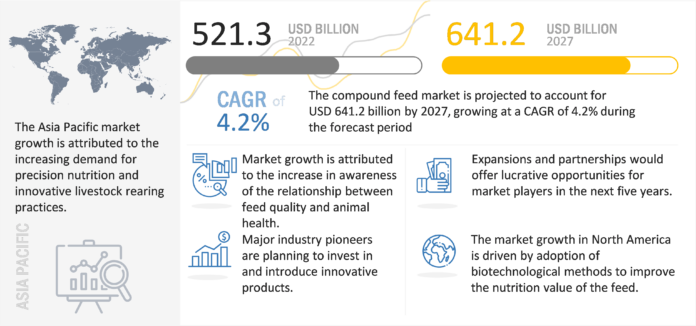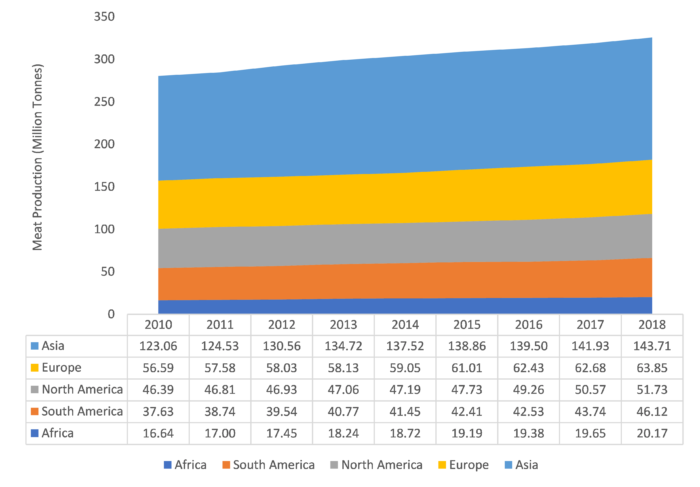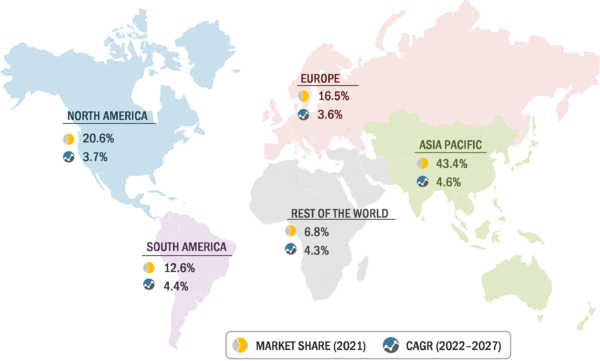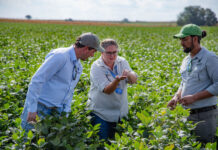
The global compound feed industry is constantly growing, and total global compound feed production is estimated to be over 1 billion tonnes (1.1 billion tons) annually. According to the International Feed Industry and Federation, global commercial feed manufacturing generates an annual turnover of over USD 400 billion. Some of the major driving factors contributing to the growth of the compound feed market include an increase in demand for animal-based products, innovations in animal husbandry, the growth of domestic and international food chains and restaurants, and an increase in awareness about precision nutrition techniques.
- FIGURE 1 attractive opportunities in global compound feed market
Source: Secondary Sources, Primary Interviews, Related Research Publications, Press Releases, Industry Journals & Books, and MarketsandMarkets Analysis
Feed plays a crucial role in animal health and welfare in the global food industry; livestock continues to be an important contributor to the global food chain. It has been observed that energy fluctuation and imbalance in the metabolic process can induce various diseases and hamper livestock performance. Compound feed, being a careful mix of ingredients, provides a proper blend of carbohydrates from cereals, fat, protein from oilseeds, and fiber which is highly valuable in animal nutrition. Hence, compound feed helps obtain high-quality milk, eggs, and dairy products and aids in a good feed conversion ratio.
Growing demand for animal products for commercial use drives market for compound feed
According to the FAO, global meat production was valued at 337.3 million tonnes (371.8 million tons) in 2020, and it is projected to grow by 14% by 2030. Animal-based products such as meat and dairy products are a good source of protein. Developing countries are witnessing an increase in demand for red meat due to the rising income of the population. In order to obtain good-quality meat products, it is necessary that livestock be free from harmful diseases. Hence, livestock producers focus on providing nutritious feed to their livestock, reducing the risk to human health and the environment.
FIGURE 2 global meat production, by region, 2010 vs. 2018 (million tonnes)

Rise in importance of livestock feeding practices in developing economies poses growth opportunity
Although intensive livestock production is witnessing growth in emerging countries, there are still vast areas where livestock, especially ruminants, is supported by grazed pastures. The low productivity in ruminants is reflected by high mortality, the poor growth rate of young ones, delay in onset of puberty, and long intervals between successive pasteurization. All these factors are attributed to poor feed resources and feeding management. Therefore, economic strategists and government policies encourage livestock farmers to incorporate compound feed in their feeding systems. This drives the demand for compound feed in developing countries.
Cereals as key ingredient for feed nutritive value to dominate compound feed market.
The different ingredients used in compound feed include cereals, cakes & meals, by-products, and supplements. Cereals are whole and ground grains incorporated into feed to serve as a nutritional source for animals. Apart from this, whole plants harvested before maturity and silage, such as corn, barley, and sorgo, are used as fodder in compound feed as a source of fiber. Cereals are estimated to dominate the compound feed market. Among cereals, maize (corn) is prominently used as a feed ingredient, with nearly 70% of its production used in feed. Wheat is also used as a major raw material in compound feed. Thus, to enhance the nutrition quality of the feed, the segment poses a significant demand.
Geographical Prominence
- FIGURE 3 compound feed market: regional overview

Source: Secondary Research, Primary Interviews, Related Research Publications, Press Releases, Industry Journals, and MarketsandMarkets Analysis
The Asia Pacific region is projected to witness the highest growth rate in the global compound feed market during the forecast period. Feed is an important constituent of agriculture, and the region is the largest feed producer. In the past few years, there has been significant growth in the dairy sector in the region, especially in India, driving the demand for feed for ruminants. The increase in demand for animal-based products; growth of the regional population; the rise in urbanization, especially in China, India, and Japan; and continuous modernization in the feed industry are factors that drive the compound feed market in Asia Pacific.
The global compound feed market is dominated by key players, Cargill, Inc. (US), ADM (US), New Hope Group (China), Charoen Pokphand Foods (Thailand), Land O’Lakes (US), Nutreco N.V (Netherlands), and Weston Milling Group (Australia).
Author Details:
| Vibhuti Gupta Research Analyst- Food & Beverage and Agri Email: Vibhuti.Gupta@marketsandmarkets.com | Abhishek Dhar Senior Research Analyst – Food & Beverage and Agri Email: abhishek.dhar@marketsandmarkets.com |
| MarketsandMarkets Research Pvt. Ltd. Website: www.marketsandmarkets.com | |









[…] Read original article here […]
Comments are closed.